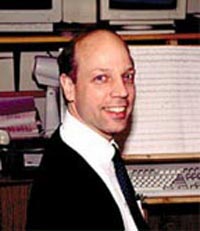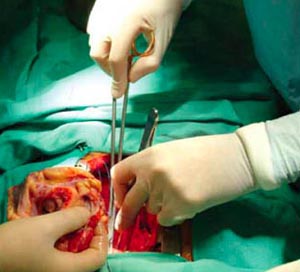 |
Right to Life
Don’t Give Your Vital Organs - Part III
Vital Organ Transplantation: A Big Lie
Randy Engel
Good Morning TIA,
I love reading this site every day. Such wonderful traditional articles. I sent my family a copy of Randy Engel's recent article on organ donation. My sister works as a nurse practitioner in Boston and works with critical care patients.
She had some challenges for Mrs. Engel, to which I hope she will reply. Below is my sister's response to me.
Most Gratefully,
K.K.

Very interesting perspective on organ donation, I can see one's viewpoint.
However, after reading this short article [I thought] maybe the book is different and that the author does not understand brain death, which is when there is no blood flow to the brain, there is no oxygen or nutrition to the brain cells and they die. Without functioning brain cells, the body cannot be maintained for long by artificial means contrary to what this article suggests ….
She seems to be confusing brain death with vegetative state. A brain dead patient does not respond to pain (or any stimuli) and does not grow, heal and go through puberty. As for donation after cardiac death, the statement about the “irreversibility” of death has been questioned by some. In CMO (Comfort Measures Only) cases, it is per the wish of the patient and/or surrogate that life support be discontinued, regardless of whether the patient is a potential donor …. and therapies are only introduced for comfort, even if a side effect is hastening death (i.e. pain medication may suppress breathing).
The universal agreement is that a period of 2-5 minutes passes after circulatory cessation before a patient can be declared dead if they are going to be an organ donor. For any other death, the patient can be declared immediately upon circulatory cessation. UMMMC policy dictates a 5-minute wait period before declaration and incision for organ recovery to ensure there will be no auto-resuscitation. There is an inherent understanding that a CMO patient will not be actively resuscitated … so perhaps a heart could be resuscitated after circulatory cessation, but that is not the intent of CMO and would be cruel.
I would challenge the author to cite one case where a truly brain dead patient’s body was supported for any length of time. All that said, there have, however, been cases where physicians have not followed accepted protocols for declaring brain death and the supposedly “dead’ patient was later found not to be dead. This is why UMMMC insists on a strict adherence to the brain death policy and checklist.

Randy Engel responds:
“Brain Death” - like its successor “Cardiac Death” and now “Certified Death” (you are dead when the doctor certifies “you are dead, regardless”) - are part of the “Big Lie” propagated by the organ transplantation industry. These terms have no basis in scientific evidence or medical fact, but were conjured up for public consumption by a group of initially anonymous physicians from Harvard Medical School in 1968 for two purposes:
- Granting legal immunity to physicians engaged in the black art of obtaining vital healthy organs from living donors, an action which produces real death in these patients, and
- Reducing costs for the long-term care and treatment of severely injured brain damaged patients and freeing up beds in intensive care units.

Dr. Shewman compiled data on 150 cases of 'brain dead' survivors |
The Harvard Committee of the new definition of death provided no official diagnostic criteria for irreversible cessation of all brain functions, nor did the drafters provide any evidence in terms of basic scientific studies or clinical data sufficient to ascertain real death as the traditional criteria of death that has served medical science for centuries. By 1978, 30 disparate sets of criteria had been published, each new set less strict than its predecessor.
According to Dr. D. Alan Shewmon, Professor of Neurology and Pediatrics, University of California (Los Angeles) School of Medicine and a corresponding member of the Pontifical Academy for Life, the fundamental flaw in the “brain death” theory – and a theory it is – is the belief that the brain confers integrative unity upon the body, transforming it from a mere collection of organs and tissues to an “organism as a whole.”
No single organ, including the brain, controls all the other vital organs. As Shewmon notes, hearts can beat independently without brain function and many other organs continue on their own, even without life in the remainder of the body.
In summary, the noted neurologist argues that a diagnosis of death by neurological criteria is based on an erroneous theory, not on scientific fact. Also, complete irreversibility of neurological function is an arbitrary prognosis, not a medically observable fact.
Since my critic challenged me to “cite one case where a truly brain dead patient’s body was supported for any length of time,” I will happily note that Dr. Shewmon, who originally supported the theory of “brain death” until facts changed his opinion, has compiled data on more than 150 long term survivors after a declaration of “brain death.” The longest was TK, diagnosed as “brain dead” at the age of four. He lived another 20 years.
To increase the number of transplantation donors, a new criteria was soon formulated, that of “cardiac death” based on circulatory and respiratory function as a criterion for determining death. Later, in 1997, we had the Pittsburgh Protocol that declared that cardiac arrest lasting 2-5 minutes causes “cardiac death and that it is ethically acceptable to remove vital organs for transplantation if a patient is in cardiac arrest for 5 minutes.”

When the scalpel slices the skin, the 'brain dead' donor reacts with pain symptoms |
Yet new cardio-thoracic research demonstrates that a patient whose heart has stopped beating for 15 minutes (or longer) after a heart attack can recover if they are treated by cooling the body to 33 degrees C. by using cardio-pulmonary by-pass, by cardioplegia, that is, stopping the heart beat chemically and slowly increasing oxygenation for 24 hours. Up to 80% of these patients can be discharged from hospital; 55% having a good neurological outcome. Clearly, the assumption made by physicians that a patient is dead five minutes after the heart has stopped beating is incorrect.
As for the statement made by my opponent that the “brain dead” patient feels no pain, I need only note that when the surgeon sticks his scalpel into the “brain dead” donor, the patient’s pulse and blood pressure shoot up and he begins to move and wriggle around, at which point the surgeon demands that the anesthetist paralyze the donor so the excising of the heart and other vital organs can proceed. If the donor were truly dead, why would he need to be given a paralyzing agent?
Before signing a donor card, I suggest readers read three important articles available online:
- The first is “Brain death - A lie destined to die.” It is a candid view of what actually happens in the hospital operation room during a transplantation procedure. Then ask yourself if this is what you want for yourself or your loved one. Will your body or that of your loved one be treated with dignity and respect or treated like an animal carcass, while the imported transplantation surgeons “are flying home in their Lear jets, laughing and partying awaiting their future glory for ‘saving’ some poor sucker’s life with a transplant”?
- The second article is “Taboo Transgressions in Transplantation Medicine” by Anna Bergmann, Ph.D., which raises some of the spiritual and psychological aspects of vital organ transplantation as a form of cannibalism from the recipient’s perspective.
- And finally, the true story of a mother's experience with organ transplantation found here. It was Mrs. Bernice Jones’ story that drew my initial attention to the criminal act of vital organ transplantation.
In closing I would like to recall the statement of Bishop Fabian Bruskewitz of the Diocese of Lincoln, Nebraska to the Pontifical Academy of the Sciences in 2005: “No respectable, learned, and accepted moral Catholic theologian has said that the words of Jesus regarding laying down one’s life for one’s friends (John 15:13) is a command or even a license for suicidal consent for the benefit of another’s continuation of earthly life” (emphasis added).
References:
1. D. Alan Shewmon, M.D., "The Brain and Somatic Integration: Insights Into the Standard Biological Rationale for Equating “Brain Death” With Death," Journal of Medicine and Philosophy 2001, Vol. 26, No. 5, pp. 457-478.
2. E. Christian Brugger, D.Phil., “Are Brain-Dead Patients Dead?.”
3. Dr. Paul Byrne, Finis Vitae, 'Is “brain death” true death?’ are the Proceedings of the “The Signs of Death" symposium conducted at the Pontifical Academy of Sciences (PAS), February 3-4, 2005.
Randy Engel is Director of U.S. Coalition for Life and
President of the International Foundation for Genetic Research/Michael Fund
Mrs. Engel can be contacted at rvte61@comcast.net.
Opt-out Medical Cards are available ($2.00 each) from
U.S.C.L. Box 315, Export, PA 15632

Posted June 3, 2010

Related Topics of Interest
 New Concepts of Death Fit Needs of Transplant Doctors New Concepts of Death Fit Needs of Transplant Doctors
 Well Prepared Propaganda to Get Organs Well Prepared Propaganda to Get Organs
 The Holy See Abandons Its Pro-Life Position The Holy See Abandons Its Pro-Life Position
 'Nine Frozen Little Ones Hanging out' 'Nine Frozen Little Ones Hanging out'
 Ratzinger Soft on Abortionists Ratzinger Soft on Abortionists
 Ratzinger Flip Flops on Communion for Abortionists Ratzinger Flip Flops on Communion for Abortionists

Related Works of Interest
|
|
Right to Life | Cultural | Hot Topics | Home | Books | CDs | Search | Contact Us | Donate

© 2002- Tradition in Action, Inc. All Rights Reserved
|
 |

|